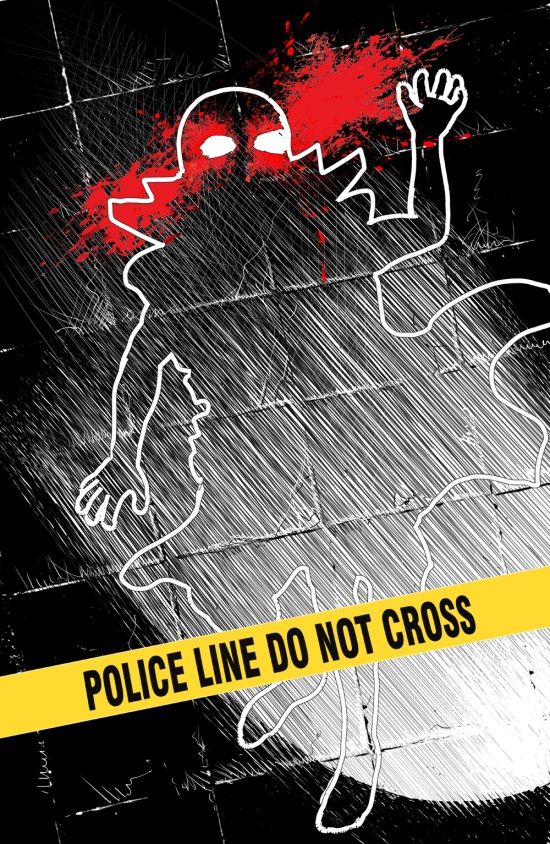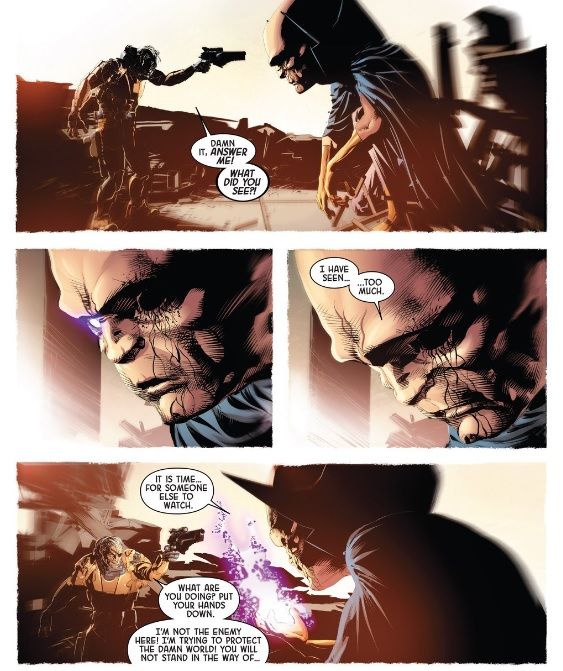Event books seem tricky, but they're really not. With their sprawling casts, catastrophic plotlines and massive fallout for books yet to come, it's easy to see how some events (we're looking at you, Siege) can go horribly wrong. But there are some key items each event must have to succeed, if not always spectacularly, whether or not we readers liked the outcome.
We will always need a threat, something too big for one hero, or, we hope, one team, to deal with. If the event were called Ninjariffic! and everyone just fought the Hand, we'd throw Daredevil at the problem and it would be solved. No, we require a large cast, as many and as diverse characters as we can assemble. After all, event books are here to help promote the rest of the Marvel line, and if it were just an Avengers story, it'd be an arc in one of their many books.
If the event can be personal, then we can have a role for all of our different heroes to play where no one is left out, or simply included to fill in space on a splash page. At the end of the event, we need some sort of ramifications for subsequent comics; it doesn't have to be life-changing (though deaths are a go-to for this kind of thing), but it should shake up at least a few titles. On the other hand, the ripples don't necessarily have to be massive, as the rest of the books have stories to tell as well; we don't want one event ruining other creators' work.
Civil War is an example of doing things right, no matter how much the end of the series fell apart. It had a threat in the form of the Superhuman Registration Act, it affected characters personally by making them choose sides, and the aftermath continues to be felt in the Marvel Universe. Another good example -- and again, controversial in reader's judgments -- is Fear Itself. The threats posed were entire realms at war using Earth as a staging ground. It affected heroes personally, as they all faced their fears, and at the end of the day, the fallout was mostly contained to Asgard, letting the other stories get back to work in their own books. Whether or not you enjoyed the stories, they were told pretty artfully and got the job done.
Did Original Sin pass the test? Read on and find out!
WARNING: BIG HONKIN' SPOILERS for all of Original Sin, mostly the big finale that came out this week so grab your copies and read along!
Original Sin began as a murder mystery with a straight-forward premise: Who killed the Watcher? It was right there on the cover and presented even new readers with enough facts to drawn them in. Intergalactically known watching guy and host of What If?, Uatu is found dead in his home without a bunch of his belongings or his eyeballs. Our heroes are specifically chosen for their skills to uncover what happened. A weird team of villains (Doctor Midas, Exterminatrix and The Orb) are named as suspects, and they also possess one of the eyeballs in question. They use that to temporarily blind our heroes with the revelation of difficult truths, and thus a bunch of solo issues and miniseries arrive to deal with the secrets.
To get us back on track, Nick Fury (who assembled the specialist heroes in the first place) shows up to deliver a major revelation of his own: Every time we've seen Nick Fury (original recipe) in comics from about 1958 or so, it's been a Life Model Decoy. The real Nick Fury has been living in space as sort of a "watcher on the wall," a preventative sniper of threats to Earth. He brought all these heroes together to solve this mystery and have one of them replace him because he's old and dying. By the end of the series, the original mystery is solved, in that we learn Fury killed Uatu after the weird team of villains attacked him, took an eye and ransacked his place. Fury finished him off and took the other eye as part of Uatu's master plan. It turns out Uatu also needed a replacement; it goes by quickly, but Uatu says he's seen too much and wants someone to watch in his place. As Issue 8 comes to a close, Fury uses his eyeball to destroy Doctor Midas, himself and the rest of Uatu's base. People are now left with the secrets that have been revealed, the Winter Soldier is the obvious choice for Fury's replacement, and Fury himself is now "The Unseen," a new kind of Watcher who's been shackled to the Moon and forced to observe with his one good eye.
So how does this all pan out with the event book plan I noted above?
Well, the threat our heroes faced was mostly the mystery of the Watcher's death; it's what got everyone together and was a greater threat than just what the Avengers or Fantastic Four (the latter little seen in this series) could handle. You could say the bigger threat was their own "sins" and the secrets exposed by Uatu's eyes, but that was more of a personal issue for each hero (and honestly could have been done with something like a "Secret Month" banner on a few titles).
Those secrets, mind you, were pretty well handled for the most part, and added some interesting twists to both solo issues and miniseries (though the Loki/Thor/Angela one is running a little long for me). As for what will come out of this event, it looks like a lot of the fallout can be ignored for the most part for other comics and plot lines to go their merry way. Sure, Thor had a secret whispered to him that seems to have left him unworthy, as he's seen desperately trying to lift Mjolnir on the Moon, but that mystery is going to have to wait until October and Thor #1. The Winter Soldier will be getting a new series for his new role in the Marvel Universe (and boy, does that book look kind of trippy!), but the idea that nothing will ever be the same is kind of a lost issue.
A while back I looked at Original Sin as a potential contender for Secret Wars, a book that got in, got out and left a mark on the Marvel Universe, ultimately satisfying the reader. And, on the whole, Original Sin was a solid series. It did what it came to do, which was to provide a platform for a few retcon tweaks, some twists in character histories, and give characters like Nick Fury and the Winter Soldier something to do. It wasn't the most ambitious premise to begin with, so it served its purpose, which may have been part of its initial charm.
This wasn't going to crack the Internet in half; this was a murder mystery with some dark, atmospheric artwork from Mike Deodato and a little of that Jason Aaron grit. In the end, Original Sin solves the original question posed and leaves us with little baggage to unpack by its conclusion.




